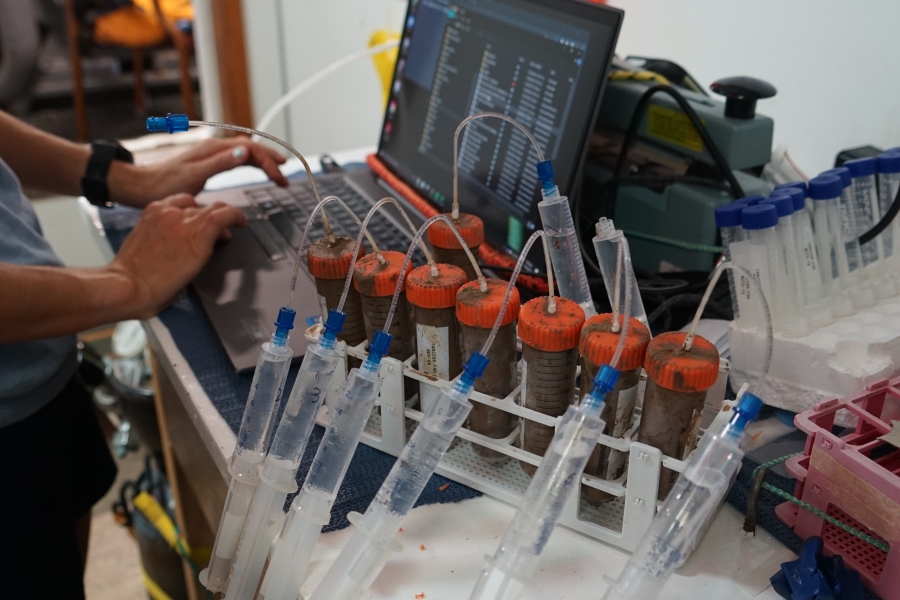RV Tangaroa voyage update
Tangaroa is now just north of the Hunga Tonga - Hunga Ha’apai volcano (HT-HH) caldera, heading to the east side of Hunga Tonga, to study the changes caused by the January 15th eruption.
24 April 2022
We have sampled 11 stations today, with different pieces of equipment, starting with rock dredges on a ridge close to Hunga Ha’apai. The samples taken returned a trove of rock specimens that got the geologist onboard excited, with good examples of rocks described as extrusive (magma erupted as lava) and crystalline intrusive (magma solidified underground).
Tangaroa then moved west to a neighbouring knoll (seamount) that lies 20 km away from HT-HH. This area is important to understanding if neighbouring seamounts could have acted as shelters to life during the eruption.
The first site we examined was the summit of the seamount. The images captured using the Deep Towed Imaging System (DTIS) showed some living animals on the summit. Using our epibenthic sleds, we then retrieved some samples of invertebrates, such as shrimp and squat lobsters.
We later examined the slope away from HT-HH with the DTIS and saw a few live deep-water corals and sponges. Our seafloor samples contained bamboo and gold corals, and glass sponges.


